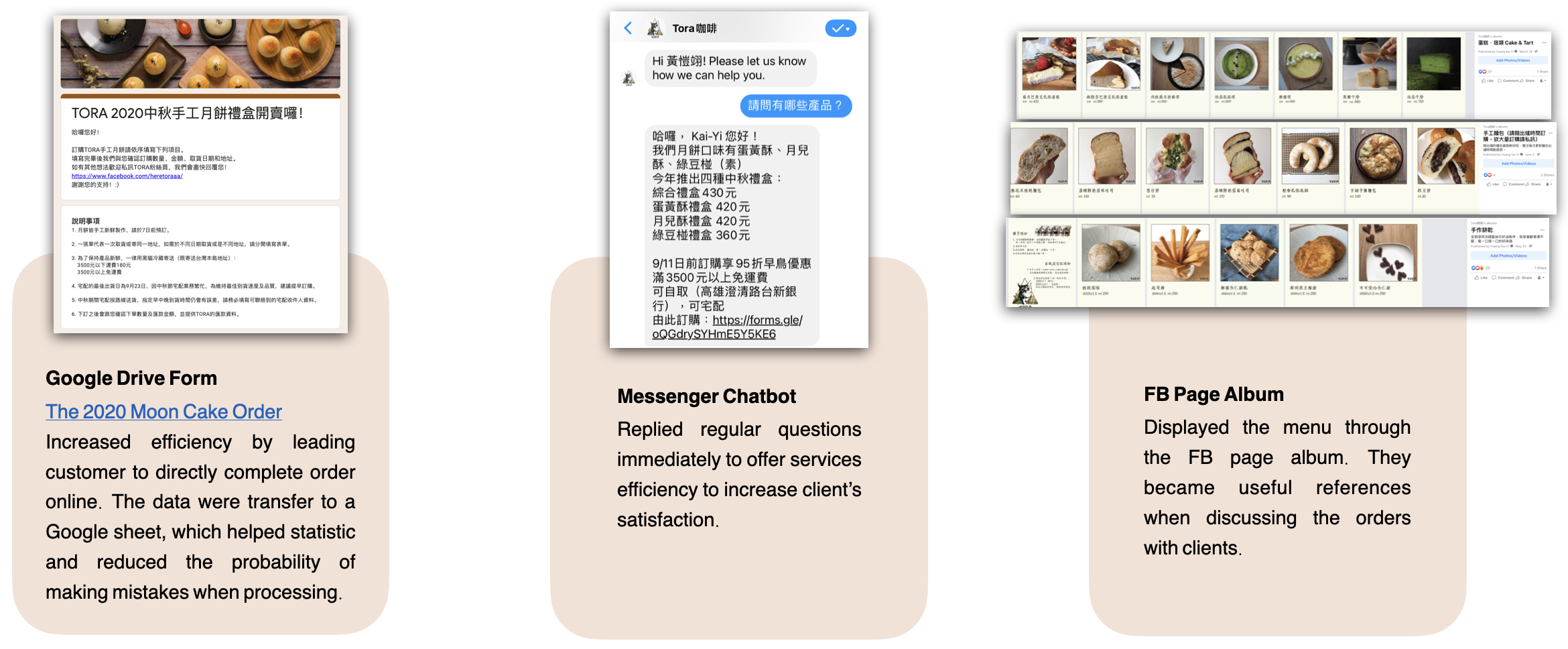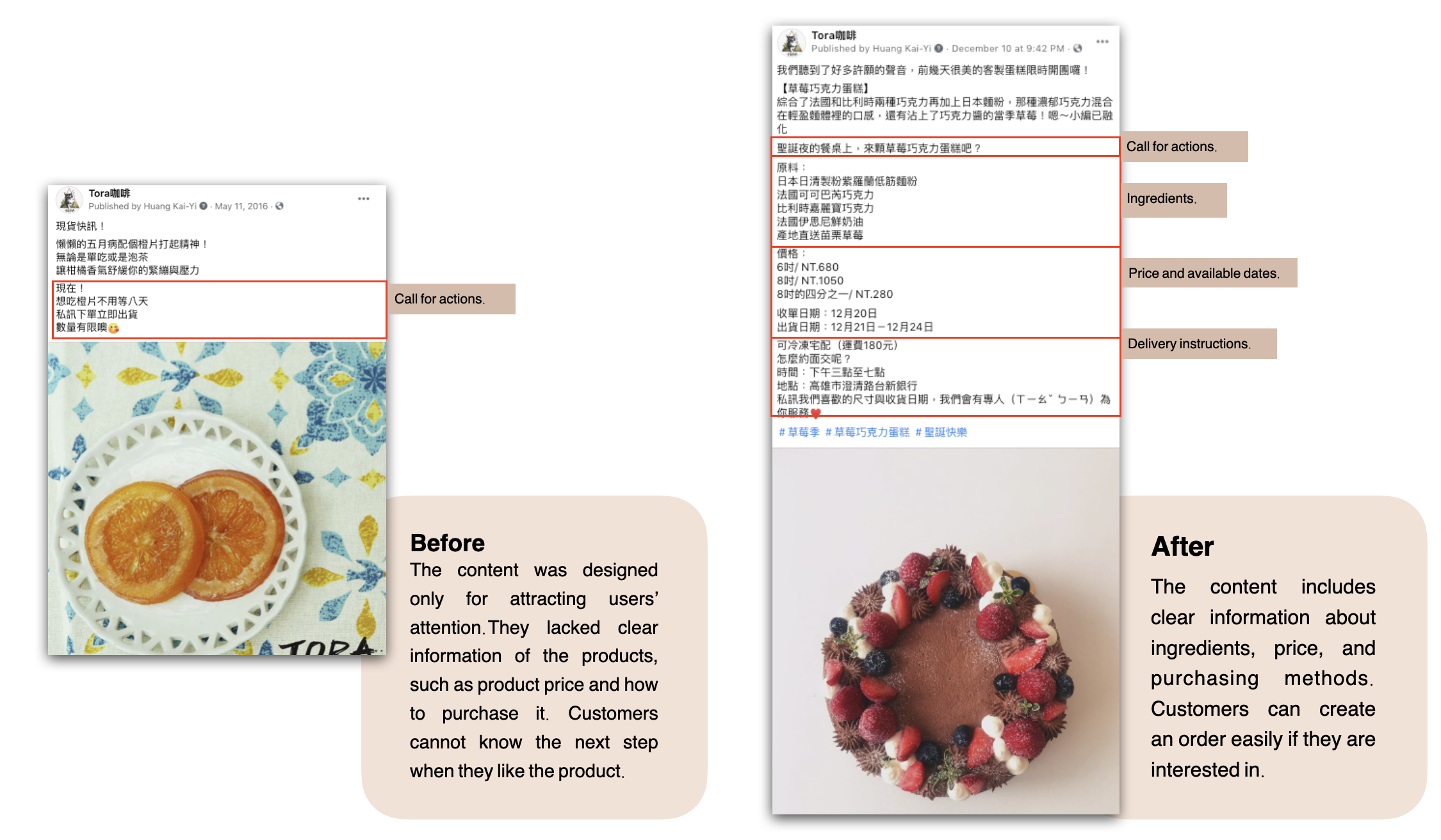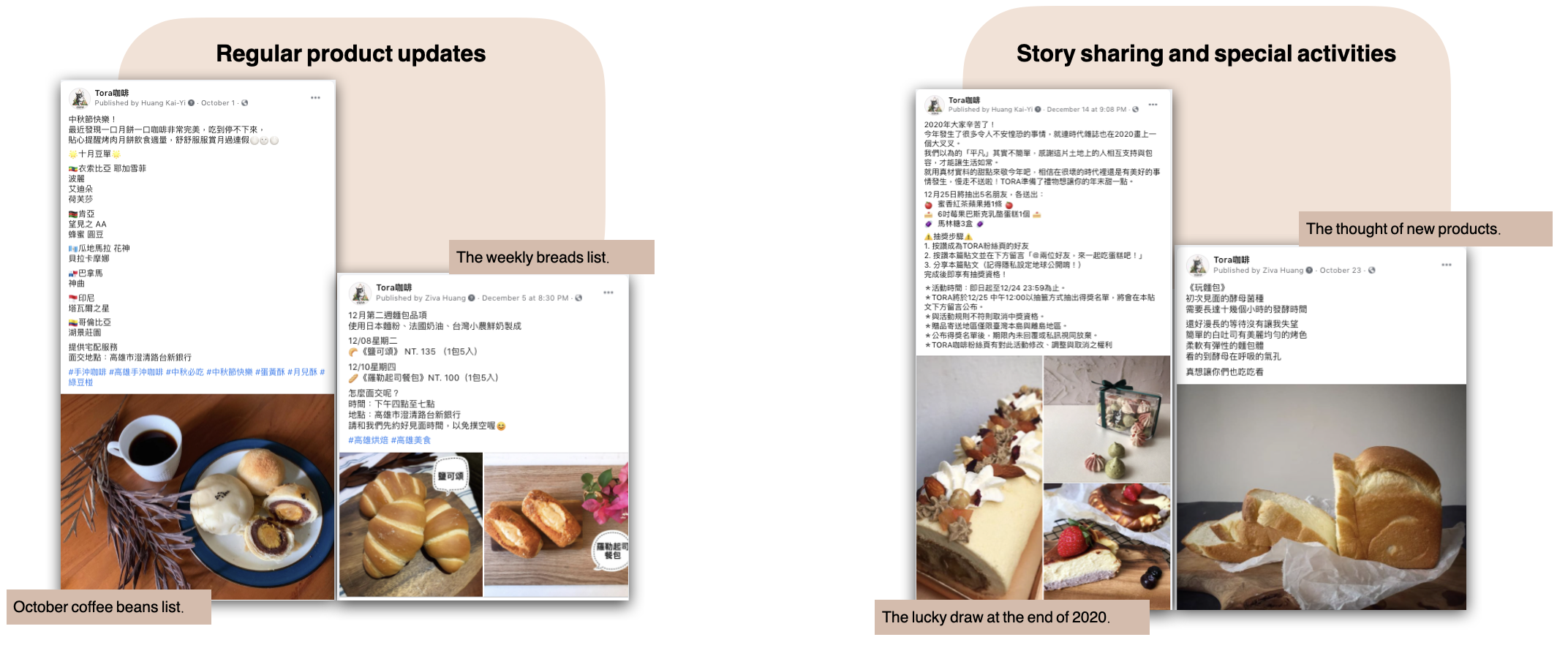TORA Café Online Service Design
In the early stages of business development, repeated questions and complaints from customers posed a challenge to the development process. To address this issue, I conducted a review of customer feedback and in-depth interviews, which led me to identify unclear information and irregular posts that were causing confusion among users. Based on these findings, I proposed strategies to build a stronger connection with customers, which included restructuring posts, utilizing digital tools that were easy for the host, and defining the selling process. These efforts ultimately led to an increase in sales and successful promotion of our product.
Project Time: 8 months
My Role: Service designer
Methods used: Depth interviews, UX strategy and writing
What is the problem ?
After reviewing the Facebook message history, I observed that the owner had received a significant number of similar and repetitive questions and complaints from customers. To gain further insight, I conducted interviews with participants, and the findings revealed that the weaknesses of the Facebook page could be summarized into the following points:
Solution
The issues mentioned above had resulted in low awareness and trust, which weakened our connection with clients. To address this problem, I implemented necessary adjustments to the sales process and post strategy by utilizing digital tools.
Part 1. Sales Process Adjustment with Digital Tools
Part 2. Redesigning the Writing Structure
Part 3. Arranging Posting Schedule
Schedule to introduce products regularly to keep clients engaged. For example, we updated the bakery dates every week and renewed the coffee bean list monthly. Additionally, we shared product stories and host activities to not only increase interaction with the followers, but also reach new potential consumers.
Results-The UX redesign significantly improved business performance
After redesigning the service process, the following changes were observed:
The number of followers on the Facebook page increased by 58%.
The post reach rate doubled compared to the same period last year.
According to feedback from coworkers, the improvements greatly increased customer satisfaction and reduced errors.
Takeaway
From this experience, I came to realize that the success of a service depends not only on its functionality but also on the collaboration between customers and business owners. By considering the opinions and needs of both parties during the design process, a balance can be struck that meets the requirements of all stakeholders. This way, the service can deliver optimal value to customers while also aligning with the goals of the business.
Furthermore, I also recognized that effective communication and feedback channels are essential to achieving this balance. By actively seeking out and listening to customer feedback, businesses can identify pain points and areas for improvement, allowing designers to make necessary adjustments to improve the user experience.
In summary, collaboration, communication, and feedback are crucial elements in designing successful services. As a designer, it is vital to consider the needs and opinions of both customers and business owners, strive for a balance, and continuously seek to improve the user experience. By doing so, businesses can build stronger connections with customers, increase their satisfaction, and ultimately drive growth and success.









